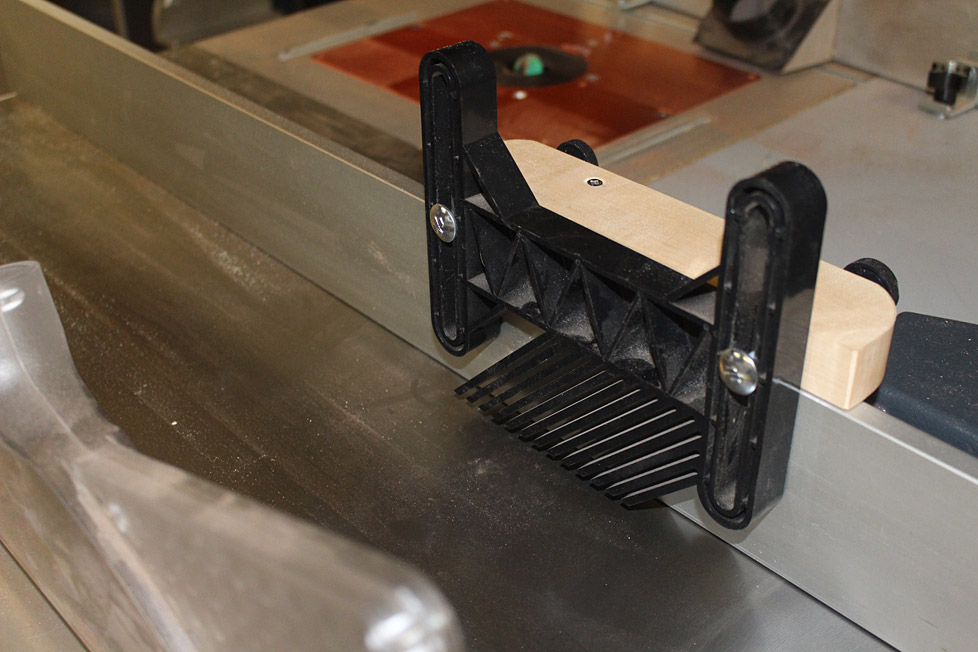Iíve always viewed kickback as having a singular cause - when the workpiece contacts the rear of the saw blade, which then causes it to climb up the blade. This is explained and demonstrated very well by Roland Johnson in a video by Fine Woodworking:
https://www.finewoodworking.com/2008...a-riving-knife
Preventing kickback should be very simple - just do not allow the workpiece touch the back of the blade. A riving knife should do this. However, in practice there are other factors to consider. For example, one cannot use a riving knife when sawing blind cuts, such as grooves.
I generally keep the blade high for two reasons. The first is that this ensures that the riving knife is always high enough - a low blade has a yet lower riving knife, and the workpiece can move over it into the blade. The second reason is that the angle of the teeth is more vertical, and this does not allow the workpiece to climb over the blade and shoot forward, as it can with a low blade.
All is not safe yet. I have a Hammer K3 (slider). Kickback is highly unlikely (in my understanding/experience here) when ripping on the slider, where the workpiece is fixed and the off-cut runs parallel to the cut. Kickback is more a feature of ripping against a rip fence, where the workpiece may be forced into the blade.
When using the rip fence, I have noted how a workpiece may be lifted and ejected. I have been puzzling why this occurs, and the reason I have come up with is that the blade cuts a fine kerf, and that the ejection is a milder version of kickback - that is, the teeth at the rear of the blade can lift the workpiece. This is controlled when ripping on the slider as the workpiece is secured at the front and rear. But I use the rip fence as well (mine is a shorter, 49Ē slider). I added a finger board to the fence, and this has stopped any lifting ...

As a result if this thread, I revisited my thoughts on the dynamics of ripping and recognised that the rip fence can do more. There is the obvious issue of a fence that is poorly aligned with the blade and will push the workpiece across and into it. That is not my concern. Instead, what I wanted was to ensure that the side of the workpiece stayed tightly to the rip fence and did not wander off it, which is largely down to operator error (how we push, and from what angle we do so). The finger board does not control this. All it does is hold down the workpiece.
In my surfing the Net, I again came across the JessEm Clear cut Saw Guides, and now understood them better. These not only hold the work down and prevent it from moving backwards, but importantly also force the workpiece into the side of the rip fence.

Expensive, but I caught a discounted special, and ordered a set. It is on its way, so not feedback as yet. At the least, I expect cleaner cut when using the rip fence. Plus it should make blind cuts much safer.
Regards from
Derek